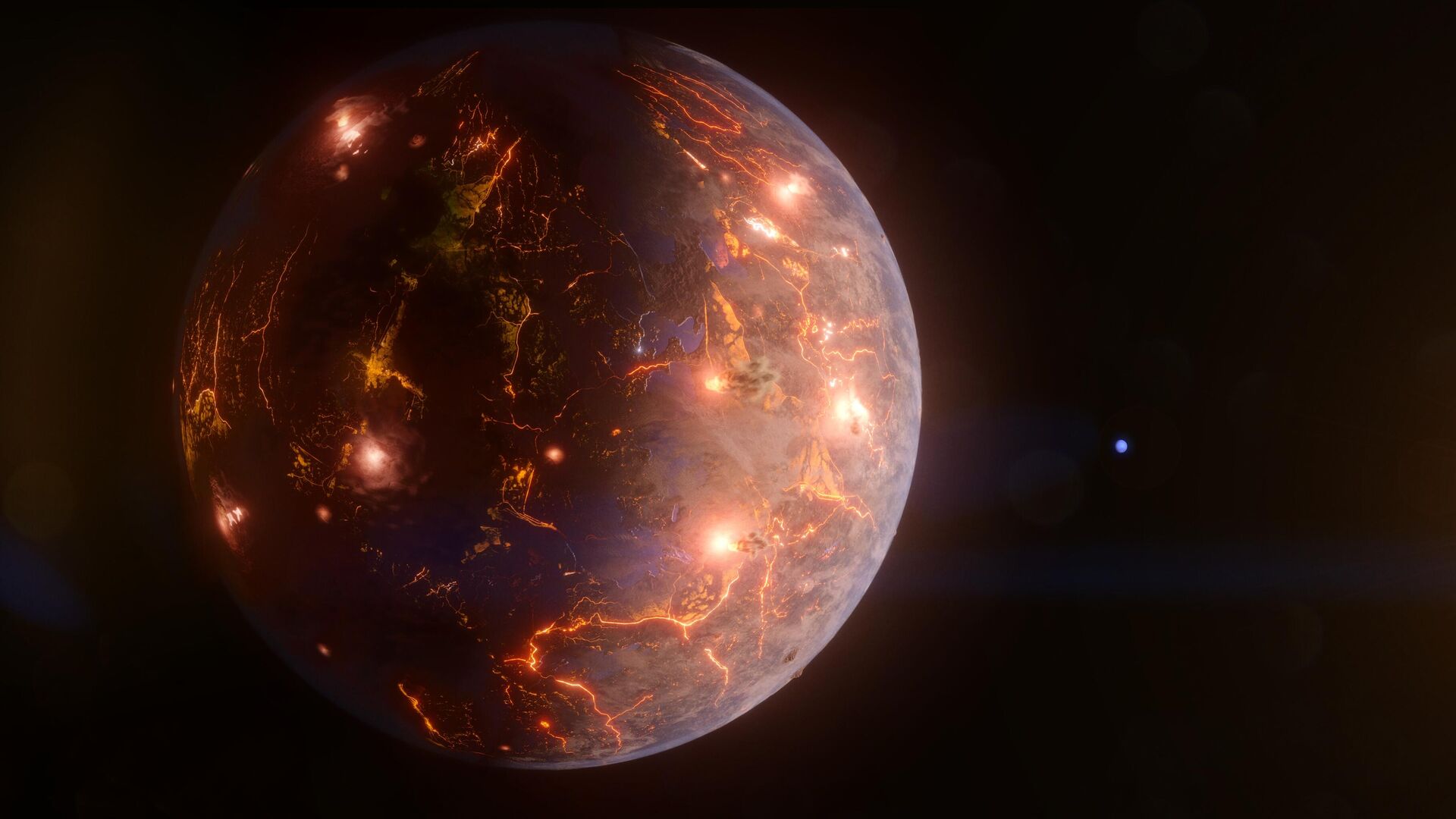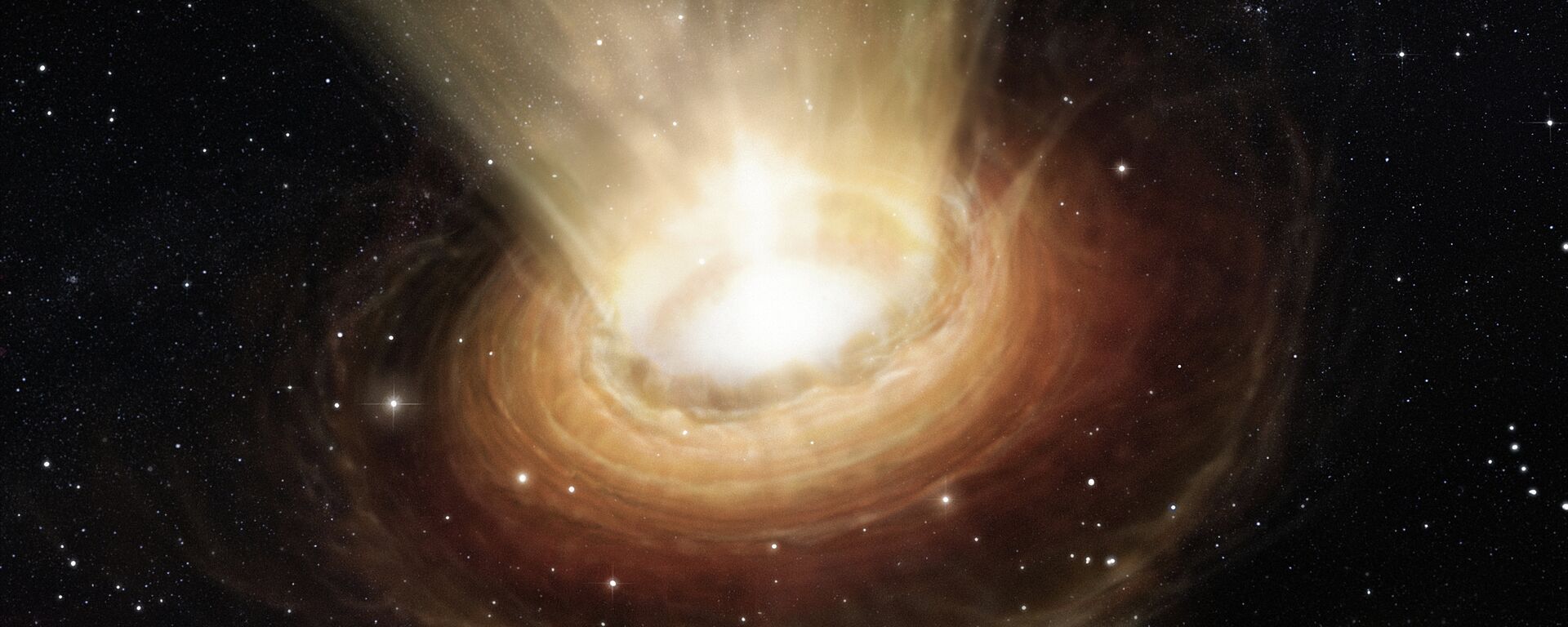https://sputnikglobe.com/20230518/astronomers-discover-earth-sized-exoplanet-likely-covered-by-volcanoes-1110432464.html
Astronomers Discover Earth-Sized Exoplanet Likely Covered by Volcanoes
Astronomers Discover Earth-Sized Exoplanet Likely Covered by Volcanoes
Sputnik International
Planet LP 791-18d orbits a red dwarf about 90 light-years from Earth, located in the southern constellation of the Bowl. The planet is estimated to be only slightly (20%) larger and more massive than Earth.
2023-05-18T04:11+0000
2023-05-18T04:11+0000
2023-06-20T17:11+0000
beyond politics
science & tech
transiting exoplanet survey satellite (tess)
spitzer space telescope (sst)
space
space exploration
https://cdn1.img.sputnikglobe.com/img/07e7/05/12/1110432015_0:0:3639:2047_1920x0_80_0_0_6515247a3b16f28ff172482b29a26f91.jpg
Newly-published findings have revealed quite the shocking cosmic discovery: an Earth-sized planet that is believed to be covered in volcanoes and rival the likes of the most volcanically active satellite Io.Due to tidal grip, the daytime side of the planet is likely very hot, and liquid water is unlikely to exist on it. However, analysis has shown that LP 791-18d regularly passes close to LP 791-18c, a much more massive outer planet, while orbiting the star.The gravitational interaction of the planets causes the planet's orbit to stretch into an ellipse, causing its interior to be heated by tidal forces. Tidal heating, in turn, is likely to cause regular volcanic eruptions, similar to what happens to Io and other satellites of the giant planets in the solar system.The eruptions are likely to emit gases which can create an atmosphere with a pressure suitable for the existence of liquid water on the night side.The exoplanet was discovered by ground-based telescopes, as well as the Transiting Exoplanet Survey Satellite (TESS) and archived data from the now-defunct Spitzer Space Telescope.The findings were published Wednesday in the journal Nature.
https://sputnikglobe.com/20230512/supermassive-black-hole-triggered-largest-cosmic-explosion-in-history-1110284589.html
Sputnik International
feedback@sputniknews.com
+74956456601
MIA „Rossiya Segodnya“
2023
News
en_EN
Sputnik International
feedback@sputniknews.com
+74956456601
MIA „Rossiya Segodnya“
Sputnik International
feedback@sputniknews.com
+74956456601
MIA „Rossiya Segodnya“
space exploration, nature space astronomy prominent articles, planet covered with volcanoes, lp 791-18d, exoplanets, most unusual exoplanets
space exploration, nature space astronomy prominent articles, planet covered with volcanoes, lp 791-18d, exoplanets, most unusual exoplanets
Astronomers Discover Earth-Sized Exoplanet Likely Covered by Volcanoes
04:11 GMT 18.05.2023 (Updated: 17:11 GMT 20.06.2023) Planet LP 791-18d orbits a red dwarf about 90 light-years from Earth, located in the Crater constellation. The planet is estimated to be only slightly (20%) larger and seven times Earth's mass, while also being in tidal grip - that is, facing the star with one side.
Newly-published findings have revealed quite the shocking cosmic discovery: an Earth-sized planet that is believed to be covered in volcanoes and rival the likes of the most volcanically active satellite Io.
Due to tidal grip, the daytime side of the planet is likely very hot, and liquid water is unlikely to exist on it. However, analysis has shown that LP 791-18d regularly passes close to LP 791-18c, a much more massive outer planet, while orbiting the star.
"A big question in astrobiology, the field that broadly studies the origins of life on Earth and beyond, is if tectonic or volcanic activity is necessary for life," said study co-author Jessie Christiansen. "In addition to potentially providing an atmosphere, these processes could churn up materials that would otherwise sink down and get trapped in the crust, including those we think are important for life, like carbon."
The gravitational interaction of the planets causes the planet's orbit to stretch into an ellipse, causing its interior to be heated by tidal forces. Tidal heating, in turn, is likely to cause regular volcanic eruptions, similar to what happens to Io and other satellites of the giant planets in the solar system.
The eruptions are likely to emit gases which can create an atmosphere with a pressure suitable for the existence of liquid water on the night side.
The exoplanet was discovered by ground-based telescopes, as well as the
Transiting Exoplanet Survey Satellite (TESS) and archived data from the now-defunct
Spitzer Space Telescope.
The findings were published Wednesday in the journal
Nature.



